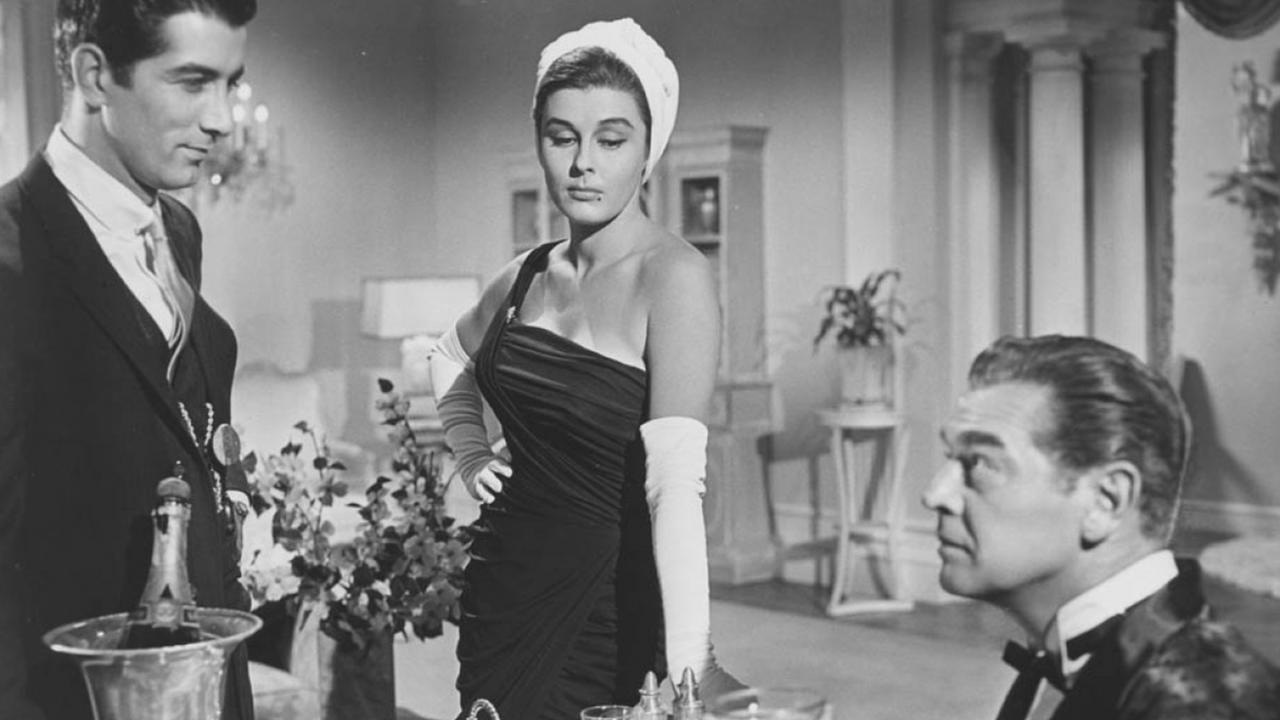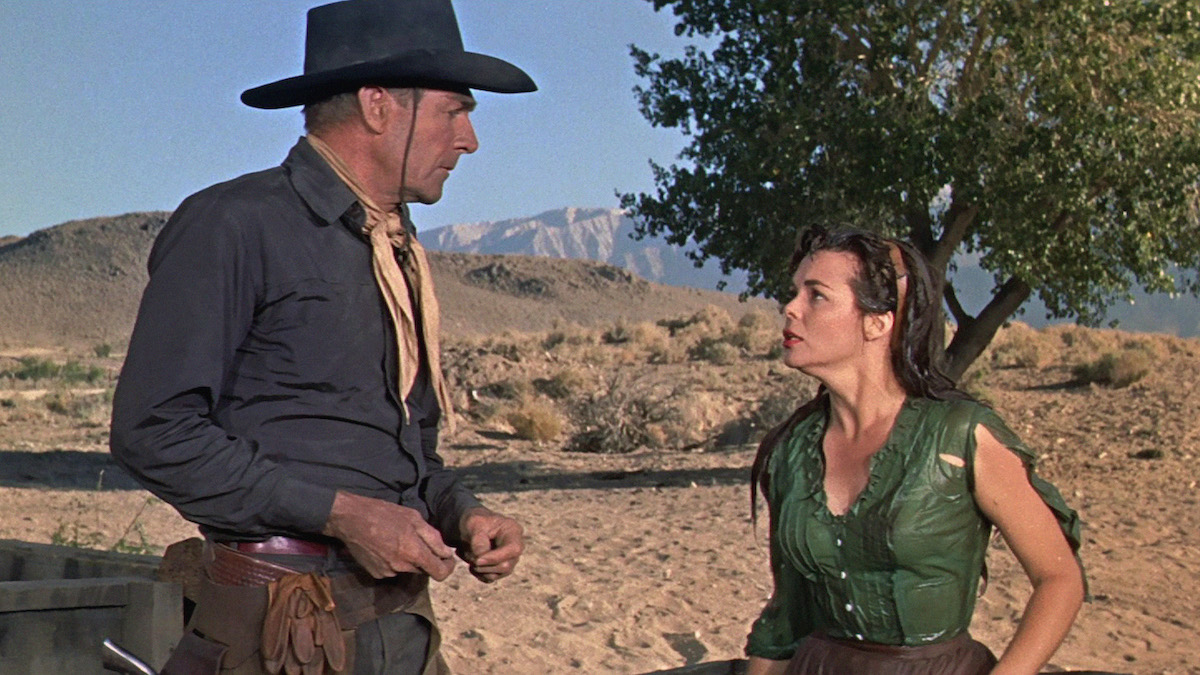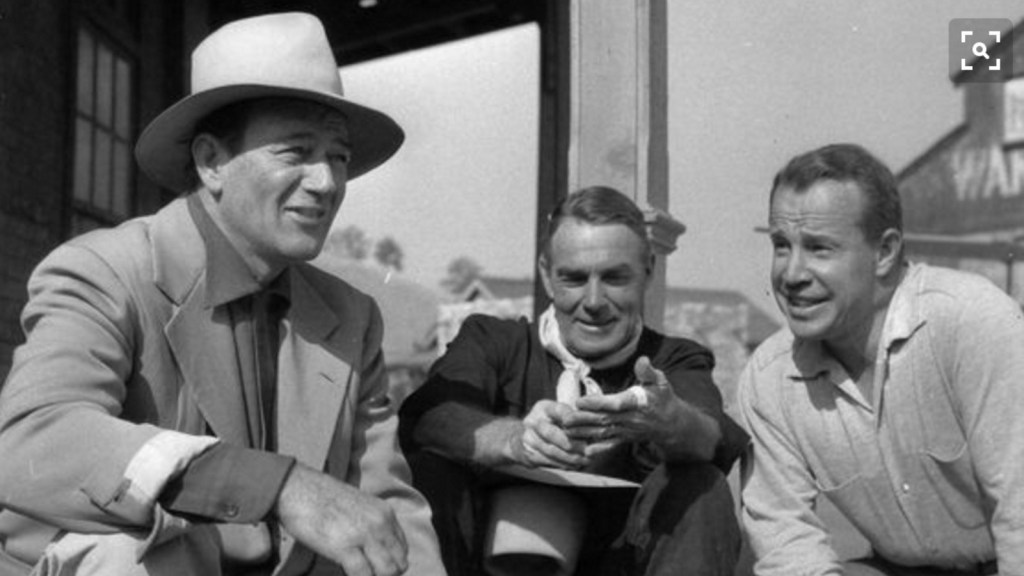Budd Boetticher was an American film director often celebrated for his contribution to the Western genre. Boetticher is known for crafting low-budget yet high-impact films during the 1950s, best exemplified in his “Ranown” cycle of films. The quintessential Boetticher films such as Seven Men from Now, The Tall T, and Ride Lonesome offer more than mere cinematic spectacles; they explore the human condition against the backdrop of the untamed American West, breathing life and depth into a genre typically characterised by one-dimensional morality.
The allure of Boetticher’s filmography lies in his ability to deftly balance the sparse, rugged landscapes of the West with the intricate dynamics of human interaction. His films are renowned for their psychologically complex characters and ethical quandaries. The protagonists in his films, often portrayed as fallible and introspective men, are distinctly antithetical to the untouchable heroes that pervaded much of Western cinema. Take Decision at Sundown, for instance, where the ‘hero’ is driven by a personal vendetta, blurring the lines between right and wrong, heroism and revenge.
The visual style of Boetticher’s films is as unique as their themes and characters. A former matador, he transferred the drama and suspense of the bullring to his cinematic framing and pacing, using wide-angle shots and natural lighting to highlight the austerity of the West and the loneliness of its inhabitants. This approach has influenced a generation of filmmakers, including Quentin Tarantino and Clint Eastwood. Boetticher was a true auteur, constantly pushing the boundaries of the Western genre and challenging audience expectations.

Budd Boetticher (1916 – 2001)
Calculated Films:
- 7 Men from Now (1956)
- The Tall T (1957)
Similar Filmmakers
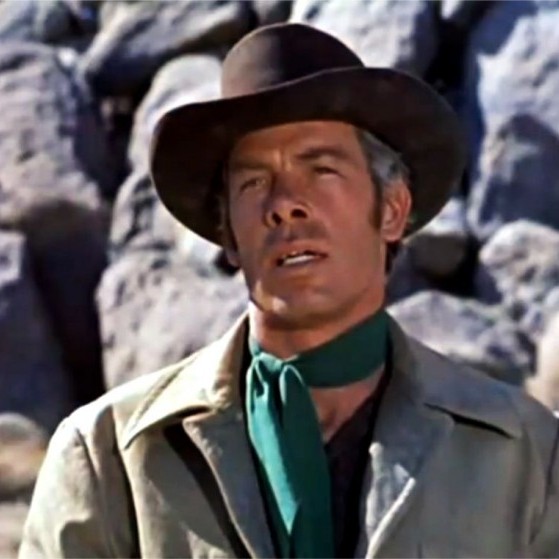


Budd Boetticher’s Top 5 Films Ranked
1. Comanche Station (1960)
Genre: Western

2. 7 Men from Now (1956)
Genre: Western
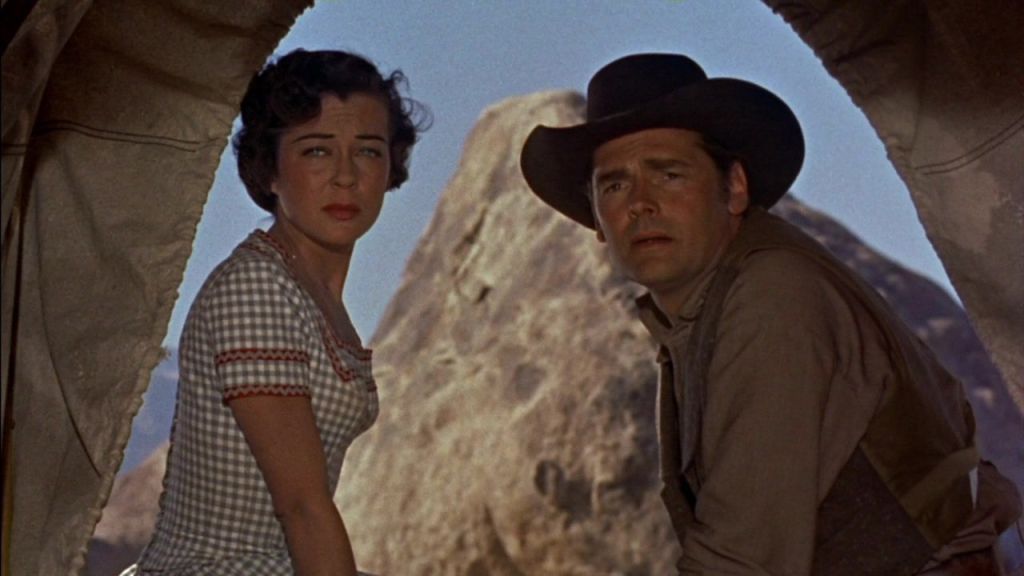
3. Ride Lonesome (1959)
Genre: Western

4. The Tall T (1957)
Genre: Western

5. Buchanan Rides Alone (1958)
Genre: Western

Budd Boetticher: The Moviemaking Matador
Oscar “Budd” Boetticher Jr. never had his day in the sun. Born on July 29, 1916, in Chicago, Illinois, Boetticher’s early life was far from an indication of the cinematic paths he would later tread.
An athlete in his youth, Boetticher attended Ohio State University, where he developed a fascination with bullfighting, an interest that would later permeate his artistic vision. Moving to Mexico to become a professional matador, Boetticher’s life was already shaping into a tale worthy of the silver screen.
The transition from matador to filmmaker wasn’t immediate, but when the transition occurred, it was decisive. Starting in Hollywood as a technical advisor for Rouben Mamoulian‘s film Blood and Sand, Boetticher found himself drawn to the craft of filmmaking. Working under the guidance of greats like John Ford, he honed his skills and began to shape his unique style.
His directorial debut, One Mysterious Night, a crime drama, didn’t immediately set him apart, but it offered glimpses of a mind-probing the human psyche, revealing Boetticher’s fascination with characters trapped by circumstance and moral ambiguity.
But it was the Western genre where Boetticher would truly find his voice. His collaboration with Randolph Scott in films like Seven Men from Now was a revelation. Here, Boetticher infused the traditional Western with a psychological complexity, painting his characters with shades of grey rather than simple black and white.
He was a director unafraid to explore the human condition’s darkest corners, diving into themes of betrayal, redemption, and existential struggle. His characters were never mere archetypes; they were flesh and blood, battling inner demons and external foes with equal ferocity. Boetticher’s Westerns were a departure from the norm, a bold reimagining of a genre that seemed confined to a specific narrative structure.
In a way, Boetticher’s cinema was a continuation of his bullfighting days, a dance with danger, a pursuit of truth through physical and emotional combat. His films were lean, economical, and packed with a visceral intensity that resonated with audiences and critics alike.
As the 1960s dawned, the Western genre was evolving, and Boetticher found himself a pioneer steering the genre into new, uncharted territories. His continued collaboration with actors like Randolph Scott in films like The Tall T and Ride Lonesome showcased a maturity in handling complex narratives and a keen insight into human nature.
Boetticher’s approach to filmmaking was a subtle rebellion against the commercial norms of his time. He avoided grandiose spectacle, focusing instead on character development, moral dilemmas, and existential angst. His camera work was a dance, mirroring the choreography of his earlier bullfighting days, capturing the raw essence of each scene.
In the mid-1960s, Boetticher took a detour from fiction, directing the documentary Arruza, which followed the life of the Mexican bullfighter Carlos Arruza. This was a personal project for Boetticher, reflecting his passion for the sport and his deep connection with its inherent drama. The film was a love letter to bullfighting and a profound insight into the man behind the matador.
But the changing tides of the film industry were not always kind to Boetticher. As the New Hollywood movement emerged, with directors embracing bolder themes and more explicit content, Boetticher’s classical style faced challenges. Funding became scarce, and the projects that once flowed began to dry up.
Despite the difficulties, Boetticher’s passion for cinema never wavered. He continued to try to get films made, and his influence extended to a new generation of filmmakers. Directors like Quentin Tarantino and Clint Eastwood cited Boetticher as an inspiration, ensuring his edge and grit wouldn’t be lost to time.
Budd Boetticher passed away on November 29, 2001, leaving behind a legacy that has only grown in stature. His films are a study of human complexity, a dance with the dark and the light, a journey into the heart of what makes us tick.
Most Underrated Film
For a long while, Boetticher’s films were all underrated, This isn’t the case nowadays; those core films with Randolph Scott now all have a cultish audience. There are early films that show traces of what the director would become, but for me, the most underrated film of his was his final film, A Time for Dying, made as the classic Western days of Hollywood were dying and the new revisionist Western era had just begun. Boetticher’s films never comfortably fit into either era, and A Time for Dying is no different.
The film is set against the backdrop of the Old West but transcends the typical tropes of the genre. Unlike many of Boetticher’s celebrated Westerns, A Time for Dying carries an air of fatalism, exploring themes of destiny, disillusionment, and the inexorable march of time.
The story follows a young would-be gunslinger, Cass Bunning, who dreams of fame but becomes ensnared in a world that seems determined to crush those dreams. The film features appearances by legendary figures like Judge Roy Bean, portrayed by Boetticher’s friend and veteran Western actor Victor Jory.
Despite its seemingly straightforward plot, A Time for Dying is rich in subtext and allegory. Boetticher’s direction is tight and focused, every shot imbued with meaning. The stark landscape, the nuanced performances, and the script’s unflinching honesty create a palpable sense of despair and inevitability.
This is not a film that glorifies the Wild West; rather, it exposes the harsh realities and broken dreams that often lie beneath the surface of American folklore. The characters are trapped by circumstances, and their own choices, and Boetticher doesn’t shy away from portraying the brutality and disappointment that life can bring.
A Time for Dying was largely overlooked upon its release, perhaps overshadowed by the seismic shifts happening in the film industry during that era. Its unflinching portrayal of existential struggle and disillusionment might have been out of step with the zeitgeist of the time.
Budd Boetticher: Themes & Style
Themes:
- Existential Struggle: Boetticher often explored characters grappling with their place in the world, their choices, and their fate. He wasn’t afraid to delve into the complexities of human existence, questioning morality, destiny, and personal struggle.
- Moral Ambiguity: His characters were often marked by shades of grey rather than clear-cut good and evil. He navigated the blurred lines between right and wrong, creating characters that were flawed, relatable, and thought-provoking.
- Human Complexity: Boetticher’s stories were not simple tales of heroism or villainy; they were studies in human nature, exploring love, betrayal, redemption, and failure. He managed to portray multifaceted characters that resonated with audiences on a deeper level.
- Survival and Resilience: His works often emphasized survival at a profound emotional or physical cost. Whether in the bullring or the Wild West, his characters had to endure and adapt, reflecting themes of perseverance and resilience.
Styles:
- Realism: He brought a sense of unembellished realism to his work. Whether it was the stark landscapes of his Westerns or the emotional rawness of his characters, everything felt tangible and authentic.
- Psychological Depth: Beyond the surface of the action or drama, Boetticher’s films were imbued with psychological complexity. He had a keen understanding of the human psyche and wasn’t afraid to explore it.
- Innovative Genre Exploration: Though he is often associated with Westerns, Boetticher managed to bring freshness to the genre, reimagining and redefining it. His Westerns are considered some of the most innovative in cinema history.
Directorial Signature:
- Choreographed Movement: Having been a matador, Boetticher’s understanding of choreography and physical grace translated into his films. His camera work was fluid, capturing the essence of scenes in a way that felt like a carefully orchestrated dance.
- Economic Filmmaking: His films were often noted for their lean construction. Boetticher was able to tell profound stories without unnecessary embellishments or excess. Every frame, every shot, had a purpose, reflecting a meticulous and deliberate artistic approach.
- Independence and Integrity: Boetticher was a director who maintained his creative vision even when faced with industry pressures. His films were true to his artistic sensibilities, unswayed by commercial considerations or prevailing trends.
Further Reading
Books:
- ReFocus: The Films of Budd Boetticher by Robert Singer
- Last of the Cowboy Heroes: The Westerns of Randolph Scott, Joel McCrea, and Audie Murphy by Robert Nott – Includes analysis of Boetticher’s collaboration with Randolph Scott.
Articles and Essays:
- Budd Boetticher: The Last Interview by Wheeler Winston Dixon, Film Criticism
- Budd Boetticher by Lee Russell, New Left Review
- Ride Lonesome: The Career of Budd Boetticher by Sean Axmaker, Senses of Cinema
- The low-slung, slyly subversive westerns of Budd Boetticher by Nick Pinkerton, Little White Lies
- Some Things a Man Can’t Ride Around: Budd Boetticher’s Ranown Westerns by Tom Gunning, Criterion
- Budd Boetticher: A Case Study in Criticism by Paul Schrader, Cinema
Documentaries:
- Budd Boetticher: A Man Can Do That (2005) – A documentary about Boetticher’s life and films, including interviews with filmmakers and critics.
Budd Boetticher – Great Director

